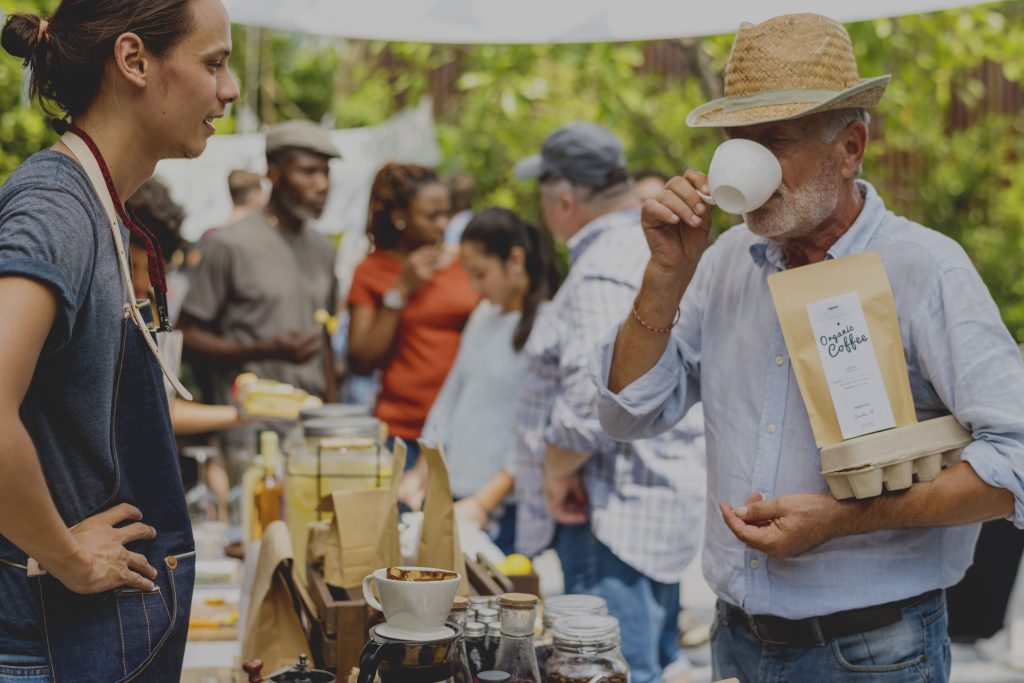The food industry is evolving at a rapid pace, especially as consumers demand more sustainable, health-conscious, and innovative products. For food startups looking to stand out, major food expos offer a unique opportunity to connect with buyers, investors, industry peers, and curious consumers. Here’s why these expos are a must for any emerging food business in 2025.

The Growing Significance of Food Expos
Food expos have long served as a showcase for new products and culinary trends. However, they’ve recently become crucial for startups eager to:
- Gain Consumer Insights: Expo attendees provide real-time feedback on product flavors, packaging, and branding.
- Identify Emerging Trends: Whether it’s plant-based proteins or functional beverages, expos reveal where the market is headed.
- Develop B2B Relationships: Beyond consumers, retailers and distributors attend these events, scouting for the next big thing.
A report by Grand View Research indicates that the global food market is expected to grow at a CAGR of 3.5% between 2023 and 2030, underscoring the competitive edge that food expos can provide.
1. Direct Access to Key Buyers and Investors
One of the most compelling reasons to attend a major expo is the chance to network with high-level decision-makers. Large-scale events typically host:
- Retail Buyers: Supermarkets, specialty stores, and online marketplaces that could carry your product.
- Distributors: Companies seeking new brands to expand their portfolios.
- Angel Investors & VCs: Potential backers interested in innovative food concepts.
Tip: Prepare a concise pitch deck or product samples. Buyers and investors often evaluate dozens of startups, so clarity and brevity can make you stand out.
2. Real-Time Market Validation
Bringing your food product to an expo is akin to running a live focus group:
- Immediate Feedback: You can test recipes, adjust packaging, and gauge consumer reactions on the spot.
- Brand Recognition: Seeing people react positively—and sometimes critically—helps refine your brand story and marketing angle.
Example: If your plant-based protein bar resonates with fitness-focused expo visitors, you’ll know exactly how to position it for broader retail success.
3. Building Industry Connections and Partnerships
Expos are a hub of collaboration. By attending:
- Form Partnerships: Team up with complementary brands for co-marketing efforts or bundle deals.
- Expand Your Supply Chain: Discover suppliers offering organic or locally sourced ingredients.
- Join Collective Innovation Efforts: Some expos host hackathons or workshops where startups can co-develop solutions, from smart packaging to functional ingredients.
Having the right network can accelerate your growth, opening doors to markets and resources you might not otherwise reach.
4. Staying Ahead of Food Trends
Keeping up with consumer demands requires staying alert to trends like:
- Ethical Sourcing & Sustainability: Shoppers increasingly favor companies with transparent, eco-friendly supply chains.
- Functional Foods: Brands that emphasize health benefits or added nutritional value stand out.
- Experimental Flavors: Global fusion or unconventional taste profiles often debut at expos.
A 2024 Food and Health Survey by the International Food Information Council revealed that 74% of consumers prioritize healthy ingredients. By witnessing the latest concepts at expos, you can adapt your offerings accordingly—and gain a competitive edge.
5. Leveraging 2025 as a Pivotal Year
While every year brings new opportunities, 2025 is shaping up to be especially dynamic for the food industry:
- Post-Pandemic Evolutions: Many consumer behaviors that emerged in recent years—like heightened interest in immunity-boosting foods—remain strong.
- Tech-Forward Solutions: Automation in production and AI-driven flavor development are on the rise.
- Regulatory Shifts: Potential changes in labeling requirements or sustainability legislation might create fresh demands, all of which are hot topics at expos.
Arriving at an expo well-prepared in 2025 can mean positioning your startup for long-term success in an environment that’s ripe for disruption.
6. Cost-Effective Marketing and PR
Though booth fees and travel costs can add up, attending an expo often yields high-ROI marketing. Consider:
- Media Coverage: Journalists looking for breakout brands frequently cover major trade shows. If your product offers something newsworthy—like a zero-waste approach or an inventive new flavor—you could secure free press.
- Viral Social Media Moments: Engaging booth elements—such as interactive tastings or photogenic setups—encourage attendees to share their experiences online, effectively marketing your product at no additional cost.
Conclusion
For food startups aiming to grow in 2025, major expos aren’t just opportunities to showcase products—they’re launchpads for serious business growth. But to truly capitalize on these events, it takes more than showing up—it takes strategy, timing, and consistent action.
That’s where MarketerValley becomes your strongest ally.
With the power of AI, MarketerValley helps you identify the most relevant expos and seasonal opportunities across the country, offering personalized, geo-targeted insights to guide your sales and marketing efforts. Instead of guessing when and where to act, you get smart suggestions on how to engage, convert, and retain new customers—before, during, and after each event.
If you want to stand out and sell smarter in 2025, MarketerValley is the tool to keep your strategy one step ahead.





